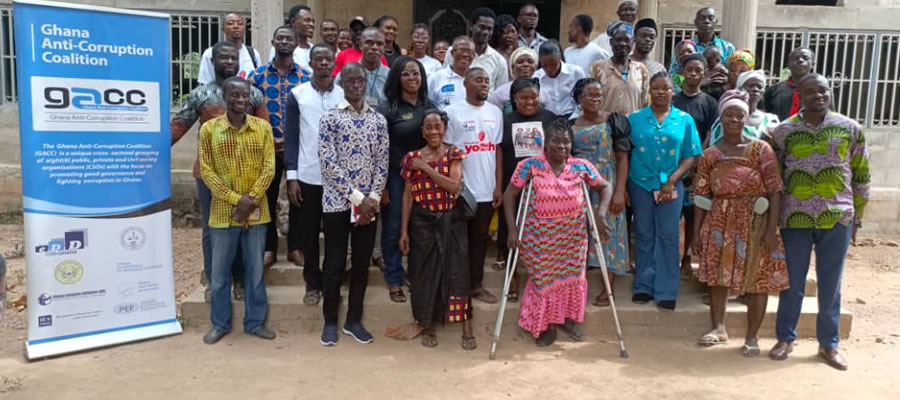

Industry
Industry referred to the type of product produced or service rendered at the respondent’s workplace.
Table 1.23 shows employed population 15 years and older by industry and sex. Out of a total population of 42,079 who are employed in the district, 79.4 percent are in the Agriculture forestry and fishing industry while 5.1 percent are in wholesale and retail industry (i.e. repair of motor vehicles and motorcycles). 3.9 percent of the employed population are in the manufacturing industry. These three activities, together, make up 88.4 percent of the industrial activities in the district.
The table further indicates that, about 1.8 percent of the employed population is in each of accommodation and food Service activities industry with other activities of extraterritorial organizations and bodies being the least.
The 2010 population and housing census revealed that there were more males employed (82.3%) in the Agriculture, Forestry and Fishing industry compared to females (76.5%).
The district pattern is generally replicated among the sexes, except that the proportion differs. For example, the proportion in Agriculture, forestry and fishing is higher for both males (82.3%) and females (76.5%) followed by wholesale and retail trade in which the proportion for females (7.0%) is twice that for males (3.2%).
Employment Status
This refers to the status of a person in the establishment where he/she currently works or previously worked.
Tain District has a total population of 42,079 persons 15 years and older who are employed. Amongst those employed however, majority (67.1%) are self-employed without employees with 22.7 percent of them contributing to family work. 5.5 percent of them are employees and 0.5 percent of them employed as house helps.
In terms of sex variations, a greater percentage of the population for both sexes is self-employed without employee(s). That is males 68.3 percent and females 66.0 percent.
Again the next activity that majority of the employed people are engaged in is those who contribute to family work. 19.5 percent of the males employed fall within this category whereas the percentage of females that fall within this category is (25.8%). House helps remain the least activity status that the employed for both sexes are engaged in. That is (0.5%) and (0.6%) for males and (0.2%) and (0.3%) for females respectively.
Employment Sector
This refers to the sector in which a person works. The employment sectors covered in the 2010 census were public, private formal, private informal, semi-public/parasternal, NGOs and international organizations. Table 1.24 shows the distribution of persons 15 years and older by sector of employment and sex. It indicates that the informal private sector is by far the largest employer of employed persons in the district (95.2%), followed by public (government) sector (3.1%).
Less than 2 percent of employees are in private formal sector (1.4%), NGOs (0.3%) or other international organization (0.0). A similar pattern is observed for the sexes, with more males than females employed across almost all the sectors except the private informal sector.
Date Created : 12/12/2018 3:28:54 AM












 facebook
facebook
 twitter
twitter
 Youtube
Youtube
 +233 593 831 280
+233 593 831 280 0800 430 430
0800 430 430 GPS: GE-231-4383
GPS: GE-231-4383 info@ghanadistricts.com
info@ghanadistricts.com Box GP1044, Accra, Ghana
Box GP1044, Accra, Ghana